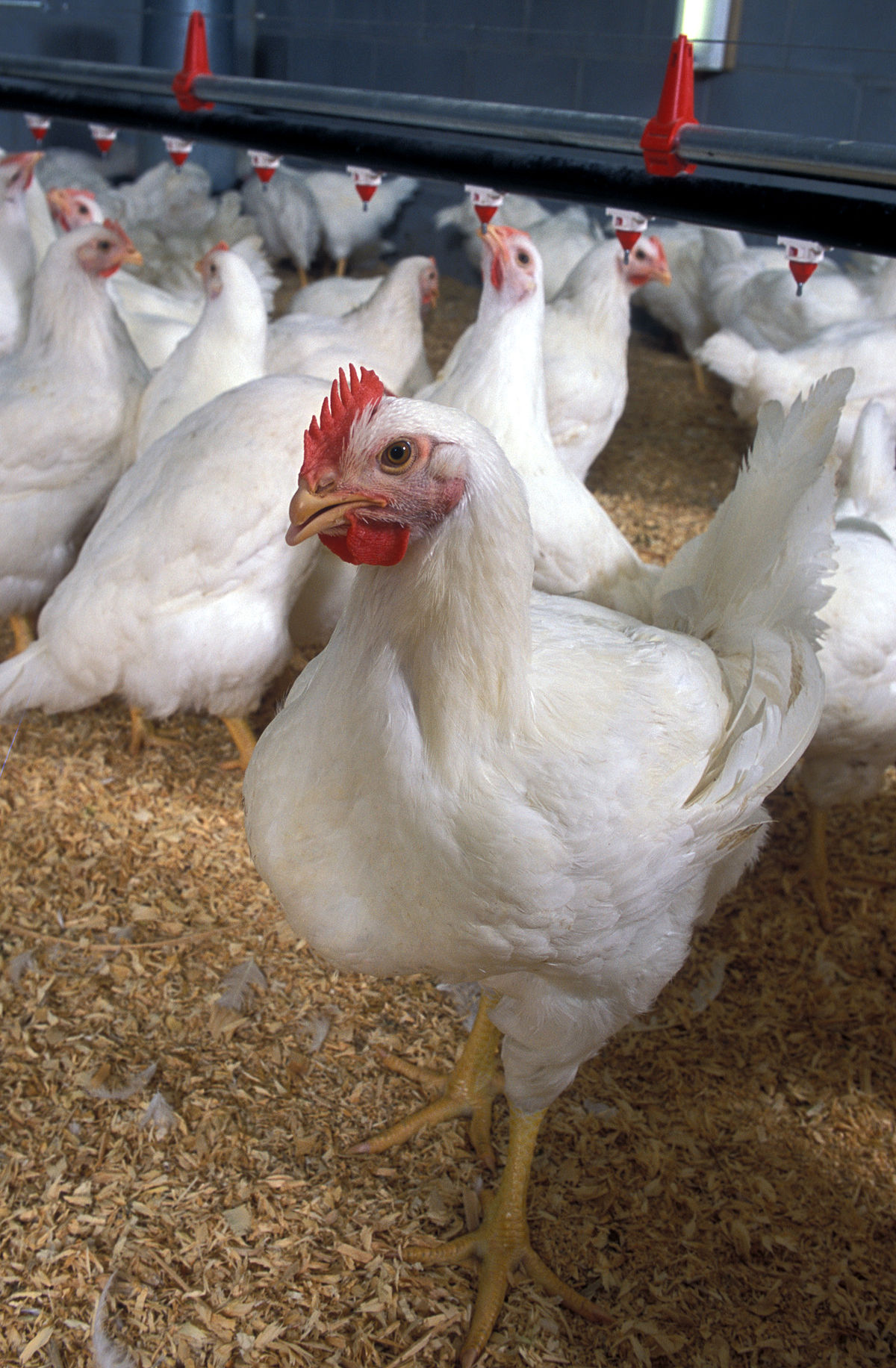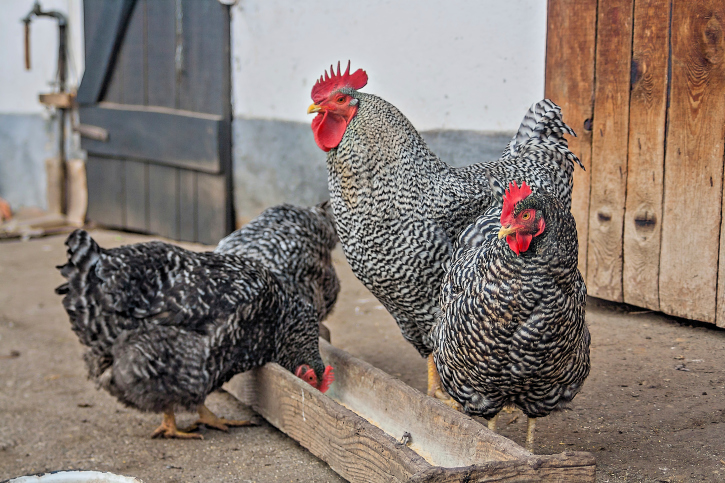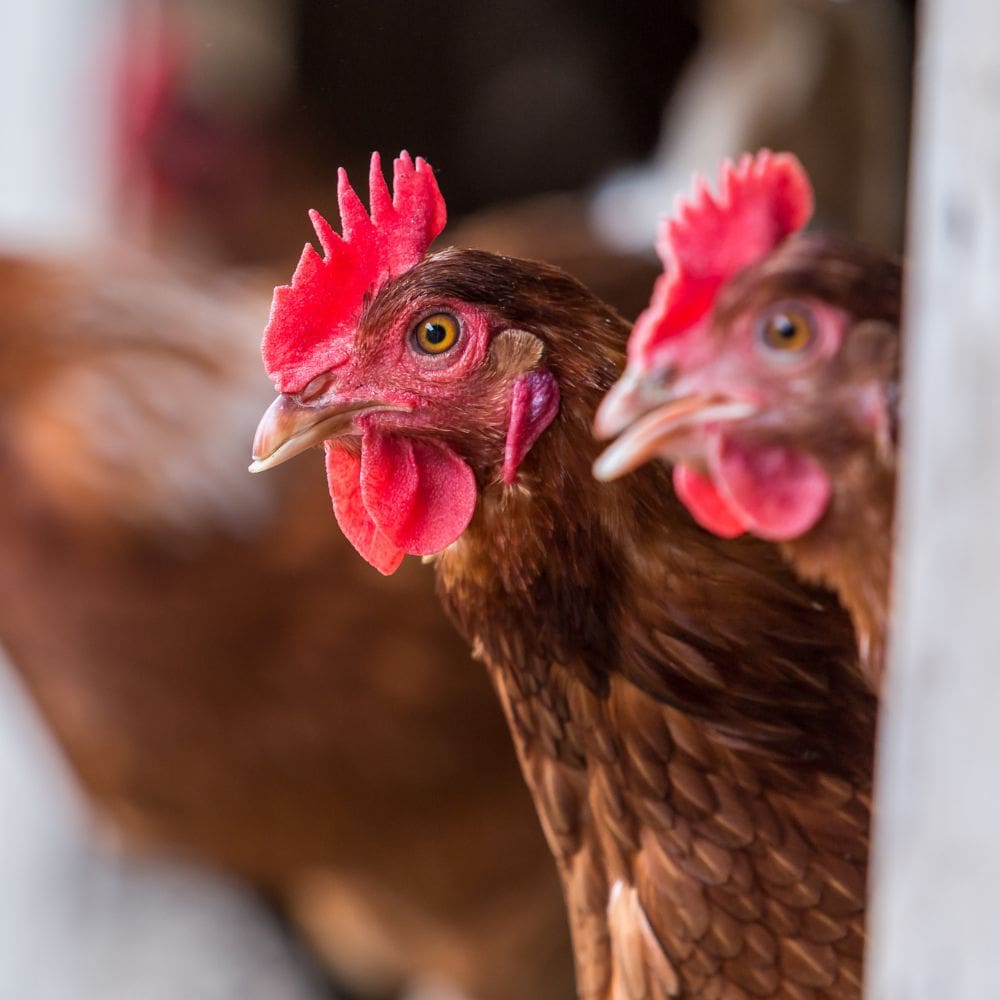
Introduction
Overview Of The Chicken Industry And The Importance Of Evaluating The Cost Of Poultry
The chicken industry plays a crucial role in the economy, providing a staple food source for many people around the world. Evaluating the cost of raising chickens and purchasing poultry meat is essential to understand the economic factors at play in this industry. By analyzing the various components that contribute to the overall cost, we can gain insights into the sustainability performance and profitability of the chicken production system.
Factors Affecting The Price Of Live Chickens
Several factors can influence the price range for live chickens. It’s important to consider these factors when estimating the cost of raising chickens. Some of the key variables include:
- Breed: Different chicken breeds have varying characteristics and growth rates, which can affect their market value.
- Age: The age of the chickens at the time of purchase or sale can impact their price. Younger chickens may be priced differently than adult ones.
- Weight: The weight of the chickens is a significant determinant of their market price. Heavier chickens generally command a higher price.
Geographical differences and market circumstances can also introduce variations in the pricing of live chickens. It’s crucial to account for these regional disparities when analyzing the cost of chicken production. Additionally, assessing the sustainability performance and environmental impact of the chicken industry requires a comprehensive techno-economic analysis and life cycle assessment (TEA/LCA). These evaluations help us understand the broader economic and environmental footprints generated by the production and consumption of poultry meat.
As the largest broiler producer in the world, the United States has a significant role in shaping the poultry industry’s economic landscape. With the average American consuming about 45 kg of chicken per capita annually, understanding the cost implications becomes even more important. By conducting thorough evaluations, we can better assess the economic factors involved in raising chickens and purchasing poultry meat, ultimately contributing to the industry’s sustainability and efficiency.
Factors Affecting Chicken Price
Geographical Differences In Chicken Prices
In addition to breed, there are other factors that can influence the price of chicken products. Geographical differences play a significant role in determining the cost of live chickens and processed chicken meat. Local market conditions, transportation costs, and regional supply and demand dynamics can all contribute to price variations. For example, chickens bred and raised in a certain region may be priced differently than those imported from another area. It is important to consider these regional disparities when analyzing the cost of chicken production.
Market Circumstances Influencing Chicken Costs
The chicken market is influenced by various market circumstances that can impact the prices of chicken products. Factors such as changes in supply and demand, seasonal fluctuations, and overall market conditions can all contribute to price fluctuations. For example, during times of high demand, such as holidays or special events, the prices of chicken products may increase. On the other hand, during periods of oversupply, prices may decrease. It is important to consider these market circumstances when estimating the cost of chicken products.
Overall, the cost of chicken products is influenced by a combination of factors including breed, geographical differences, cuts, and quality. Understanding these factors is important for evaluating the cost of raising chickens and purchasing poultry meat. By analyzing the various components that contribute to the overall cost, we can gain insights into the economic factors at play in the chicken industry. This understanding is crucial for ensuring the sustainability and profitability of the chicken production system.
Understanding Live Chicken Pricing
Average Cost Range Of Live Chickens Per Pound
The cost of live chickens can vary depending on several factors, including breed, age, and weight. On average, the typical cost of live chickens ranges from $1.50 to $3.00 per pound. It’s important to note that these prices can be influenced by geographical differences and market circumstances.
Variations In Chicken Prices By Breed, Age, And Weight
In addition to breed, age, and weight, there are other factors that can affect the price of live chickens. Geographical differences play a significant role in determining the cost of live chickens. Local market conditions, transportation costs, and regional supply and demand dynamics all contribute to price variations. For instance, chickens bred and raised in a certain region may be priced differently than those imported from another area.
Market circumstances also have an impact on chicken prices. Changes in supply and demand, seasonal fluctuations, and overall market conditions can all contribute to price fluctuations. During times of high demand, such as holidays or special events, the prices of chicken products may increase. Conversely, during periods of oversupply, prices may decrease.
Understanding the factors that influence chicken prices is essential for evaluating the cost of raising chickens and purchasing poultry meat. By considering breed, geographical differences, and market circumstances, we can gain insights into the economic factors at play in the chicken industry. This understanding is crucial for ensuring the sustainability and profitability of the chicken production system.

Chicken Price Comparison
Comparison Of Live Chicken Prices From Various Sources
When it comes to buying live chickens, the prices can vary depending on where you source them. Here is a comparison of live chicken prices from different sources:
- Local Farms: Many local farms offer live chickens at competitive prices, often ranging from $1.50 to $3.00 per pound. These chickens are usually raised in a humane and sustainable manner, and some farms may even offer organic or free-range options at slightly higher prices.
- Grocery Stores: Grocery store prices for live chickens can be higher compared to buying directly from a farm. Depending on the store and location, the prices may range from $2.50 to $4.00 per pound. However, the convenience of purchasing from a grocery store might outweigh the price difference for some.
- Online Retailers: Some online retailers offer live chickens for sale, and prices can vary depending on the seller. It’s important to factor in the shipping costs as well. Prices may start from $2.00 per pound, but the final cost, including shipping, could be higher.
- Farmers Markets: Farmers markets are a great place to find locally sourced live chickens. The prices at farmers markets can be comparable to those at local farms, ranging from $1.50 to $3.00 per pound. Plus, you have the added advantage of supporting local farmers and knowing where your food comes from.
Analyzing Price Differences Based On Factors Like Organic, Free-range, And Conventional Poultry
When comparing chicken prices, it’s important to consider factors like organic, free-range, and conventional poultry. Here’s a breakdown of how these factors may affect the price:
- Organic: Organic chickens are raised without the use of antibiotics, hormones, or genetically modified organisms. Due to the higher cost of organic feed and production practices, organic chicken prices are generally higher. You can expect to pay around $4.00 to $6.00 per pound for organic chickens.
- Free-Range: Free-range chickens are allowed access to the outdoors, which gives them more space to move around and exhibit natural behaviors. Similar to organic chickens, the cost of raising free-range chickens is higher, resulting in slightly higher prices. Prices for free-range chickens may range from $3.50 to $5.50 per pound.
- Conventional: Conventional chickens refer to those raised using conventional farming methods, with no specific requirements for outdoor access or organic practices. These chickens are often the most affordable option, with prices ranging from $1.50 to $3.00 per pound.
By understanding the price differences based on factors like organic, free-range, and conventional poultry, consumers can make informed decisions based on their preferences and budget. Whether you choose to support local farms, opt for organic or free-range options, or go for conventional poultry, it’s important to consider your priorities and make choices that align with your values.
Economic And Budget Considerations
Calculating The Cost Of Chicken For Home Cooking And Meal Planning
When considering the cost of chicken for home cooking and meal planning, it is important to factor in the price per pound and the amount of chicken needed for a particular recipe or meal. This will help determine the overall cost and ensure that it fits within your budget. Additionally, considering the various cuts of chicken and their prices can also help in making cost-effective choices.
Effects Of Chicken Pricing On Consumer Budgets
The pricing of chicken can have an impact on consumer budgets, especially for those who consume chicken regularly or in larger quantities. If chicken prices are high, it may require consumers to adjust their shopping habits or allocate a larger portion of their budget for chicken products. On the other hand, lower chicken prices can provide some relief to consumers’ budgets, allowing them to allocate funds to other expenses.
To make informed decisions about purchasing chicken products, consumers can consider the following factors:
- Enterprise Budget: Utilizing an enterprise budget can help calculate potential profits, break-even prices, and keep track of expenses related to chicken production. This tool can aid in understanding the economic considerations involved in raising and selling chickens.
- Regional Variations: Chicken prices can vary geographically due to factors such as supply and demand dynamics. It is important to be aware of these regional variations as they can affect the cost of chicken in certain areas.
- Quality Factors: Factors such as the chicken’s diet, living conditions, and processing methods can influence its quality and, consequently, its price. Higher quality chicken, such as those raised on a specialized diet or in free-range environments, may be more expensive due to the additional care and resources involved in their production.
By considering economic and budgetary factors, as well as the quality of the chicken, consumers can make informed decisions when purchasing chicken products that align with their preferences and budget constraints.
Seasonal Variations In Chicken Price
How Seasonal Fluctuations Impact Chicken Costs
Seasonal variation plays a significant role in influencing poultry prices, including the cost of chicken. Supply and demand patterns are affected by various factors specific to different times, such as holidays or seasons of the year. This leads to shifts in both production and consumption of poultry products, ultimately impacting their prices. Producers adjust their production and pricing tactics to align with increased demand during peak seasons, while consumers strategize their purchases to save costs by considering seasonal price patterns.
Tips For Saving Money During Peak Seasons
During peak seasons when chicken prices are higher, consumers can follow these tips to save money:
- Plan meals in advance: By planning meals ahead of time and creating a grocery list based on what is on sale, consumers can take advantage of lower prices and avoid impulse purchases.
- Buy in bulk: Purchasing chicken in bulk quantities can often lead to cost savings. Consumers can buy larger packages and portion the chicken for multiple meals, freezing what they don’t immediately need.
- Look for weekly specials and promotions: Keep an eye out for weekly specials and promotions at local grocery stores or butchers. These can offer discounts or other incentives to help save on chicken purchases.
- Consider alternative cuts of chicken: Some cuts of chicken may be cheaper than others. By exploring different cuts and recipes, consumers can discover more cost-effective options while still enjoying delicious chicken meals.
- Utilize frozen chicken: Frozen chicken is often more affordable than fresh chicken. It can be a convenient option to have on hand for quick and easy meals without breaking the budget.
By being aware of seasonal fluctuations in chicken prices and implementing these money-saving tips, consumers can make the most of their budgets while still enjoying the benefits of chicken as a versatile and nutritious protein source.

Negotiating Chicken Price
Strategies For Negotiating The Cost Of Live Chickens
When purchasing live chickens from a farm or local supplier, consumers can employ the following strategies to negotiate the best price:
- Research market prices: Before entering into negotiations, it’s important to research current market prices for live chickens. Understanding the average price range will give consumers a better idea of what to expect and enable them to negotiate more effectively.
- Buy in larger quantities: Purchasing chickens in larger quantities can often lead to discounted prices. Farmers and suppliers may be more willing to negotiate a lower cost per chicken when they can sell a larger batch. This is especially true if consumers are willing to commit to regular purchases over an extended period.
- Prioritize long-term relationships: Building a good rapport with farmers or suppliers can result in better negotiation opportunities. Establishing a long-term relationship based on trust and reliability can lead to more favorable pricing arrangements.
- Offer to prepay or pay in cash: Some farmers or suppliers may be open to negotiating a lower price if consumers are willing to prepay or pay in cash. This eliminates the need for credit transactions and can save both parties money in processing fees or interest charges.
Understanding Wholesale And Bulk Purchasing Prices
Wholesale and bulk purchasing prices can also help consumers negotiate more affordable chicken prices. Here’s what buyers need to know:
- Wholesale prices: Wholesale prices typically refer to the cost per pound of chicken when purchased in large quantities, usually by retailers or distributors. These prices are often lower compared to retail prices since they are intended for resale.
- Bulk purchasing: Buying chicken in bulk quantities can lead to significant cost savings. Whether purchasing from wholesalers or directly from farms or suppliers, consumers can inquire about bulk purchasing options to negotiate better prices.
- Consider value cuts: Value cuts, such as chicken thighs or drumsticks, can be more affordable compared to popular cuts like chicken breasts. Consumers can explore different cuts of chicken and recipes to find more cost-effective options that still offer delicious and nutritious meals.
By utilizing these negotiation strategies and understanding wholesale and bulk purchasing prices, consumers can save money while still enjoying the taste and nutritional benefits of chicken.
Alternatives To Live Chickens
Considerations For Buying Frozen Or Pre-packaged Chicken Products
When exploring alternatives to purchasing live chickens, consumers have the option of buying frozen or pre-packaged chicken products. There are several factors to consider when making this choice:
- Convenience: Frozen or pre-packaged chicken products offer convenience as they are readily available in grocery stores and can be stored for a longer period. This can be beneficial for individuals with busy schedules or limited access to fresh poultry.
- Price: Frozen or pre-packaged chicken products may be more affordable compared to live chickens, especially if bought in bulk or during sales promotions. Consumers can compare prices and weigh the cost-effectiveness of different options.
- Variety: Frozen or pre-packaged chicken products come in various forms, such as boneless skinless breasts, drumsticks, wings, or whole chickens. Consumers can choose the cuts and quantities that best suit their needs and preferences.
- Quality: While fresh chicken is often preferred for its taste and texture, frozen or pre-packaged products can still offer good quality if sourced from reputable brands or suppliers. Checking for proper packaging, expiration dates, and certifications can ensure the product’s quality and safety.
Evaluating The Cost-effectiveness Of Different Poultry Options
To determine the most cost-effective poultry option, consumers can compare the prices and benefits of different poultry species, including chickens and quails. Here are some factors to consider:
| Factors | Chickens | Quails |
|---|---|---|
| Initial investment | Higher initial costs for chicken coop and equipment | Lower initial costs for quail housing and equipment |
| Feed and care costs | Higher feed and care costs for chickens | Lower feed and care costs for quails |
| Egg production | Chickens typically lay larger eggs but at a slower rate | Quails often lay smaller eggs but at a faster rate |
| Market demand | Higher market demand for chicken products | Varies depending on local preferences and market demand |
By evaluating these factors, consumers can make an informed decision based on their budget, resources, and market opportunities. It is essential to consider both the expenses and potential returns when comparing the cost-effectiveness of different poultry options.
Conclusion
Summary Of Key Points And Recommendations For Evaluating Chicken Prices
The decision to purchase live chickens or alternative chicken products such as frozen or pre-packaged options depends on several factors. Consumers should consider convenience, price, variety, and quality when making their choice. Frozen or pre-packaged chicken products offer convenience and can be more affordable, especially when purchased in bulk or during sales promotions. They also provide a variety of cuts and quantities to suit individual preferences. While fresh chicken is often preferred for its taste and texture, frozen or pre-packaged products can still offer good quality if sourced from reputable brands. Checking for proper packaging, expiration dates, and certifications is important to ensure product quality and safety.
Importance Of Considering Factors Beyond Cost When Purchasing Poultry Products
When evaluating the cost-effectiveness of different poultry options, it is crucial to consider factors beyond just the price. For example, comparing chickens and quails involves looking at initial investment costs, feed and care costs, egg production rates, and market demand. Chickens may require a higher initial investment and have higher feed and care costs, but they also have a higher market demand for their products. Quails, on the other hand, have lower initial costs, lower feed and care costs, but their market demand may vary depending on local preferences. These additional factors should be considered along with price when making a decision.
In conclusion, consumers should carefully evaluate their needs, budget, and market opportunities when deciding between live chickens and alternative chicken products. Both options have their advantages and disadvantages, and the right choice will depend on individual circumstances. It is essential to consider convenience, price, variety, quality, as well as factors beyond cost to make an informed decision. By doing so, consumers can ensure that they are making the most cost-effective choice while also meeting their preferences and requirements.
FAQ: Chicken Price per lb – Evaluating the Cost of Poultry
Q: How is the price of chicken per lb determined?
A: The price of chicken per pound is determined by several factors, including production costs, market demand, supply levels, and any external factors that may affect chicken production, such as weather events or disease outbreaks.
Q: Why does the price of chicken per lb vary from store to store?
A: The price of chicken can vary from store to store due to a variety of factors. Different stores may have different purchasing agreements with suppliers, varying overhead costs, or may offer different discounts or promotions.
Q: What are some factors that can affect the cost of chicken per lb?
A: Some factors that can affect the cost of chicken per pound include feed prices, labor costs, transportation expenses, regulatory requirements, and any changes in market conditions.
Q: Is organic chicken more expensive than conventional chicken?
A: Yes, organic chicken is often more expensive than conventional chicken. This price difference is primarily due to the higher costs associated with organic farming practices, such as organic feed and increased space requirements.
Q: Are there any other factors besides price to consider when evaluating the cost of poultry?
A: Yes, besides price, there are several other factors to consider when evaluating the cost of poultry. These include the quality and taste of the chicken, its nutritional value, the farming practices used, and any certifications or labels indicating animal welfare or sustainability standards.
Q: How can I assess the quality of chicken before purchasing?
A: To assess the quality of chicken before purchasing, you can check for certain indicators. Look for moist and plump skin, a fresh smell, and avoid any packages with signs of freezer burn or excessive bruising.
Q: What are some advantages of buying chicken in bulk?
A: Buying chicken in bulk can offer several advantages. It can often be more cost-effective, as bulk purchases may qualify for discounts. Additionally, having a stockpile of chicken can save you time on frequent grocery trips and ensure you always have a protein source at hand.
Q: Is it worth paying more for free-range or pasture-raised chicken?
A: The decision of whether to pay more for free-range or pasture-raised chicken depends on your personal preferences and values. These types of chicken are often considered to have better welfare standards and potentially better flavor, so if these factors are important to you, it may be worth the extra cost.
Q: How can I find the best deals on chicken?
A: To find the best deals on chicken, it’s recommended to compare prices at different stores, watch out for sales or promotions, and consider purchasing frozen chicken, which is often cheaper than fresh. You can also sign up for store newsletters or loyalty programs to receive alerts about discounts or special offers.

Spice up Your Life with Spicy World – Where Chinese Cuisine Meets Passion!